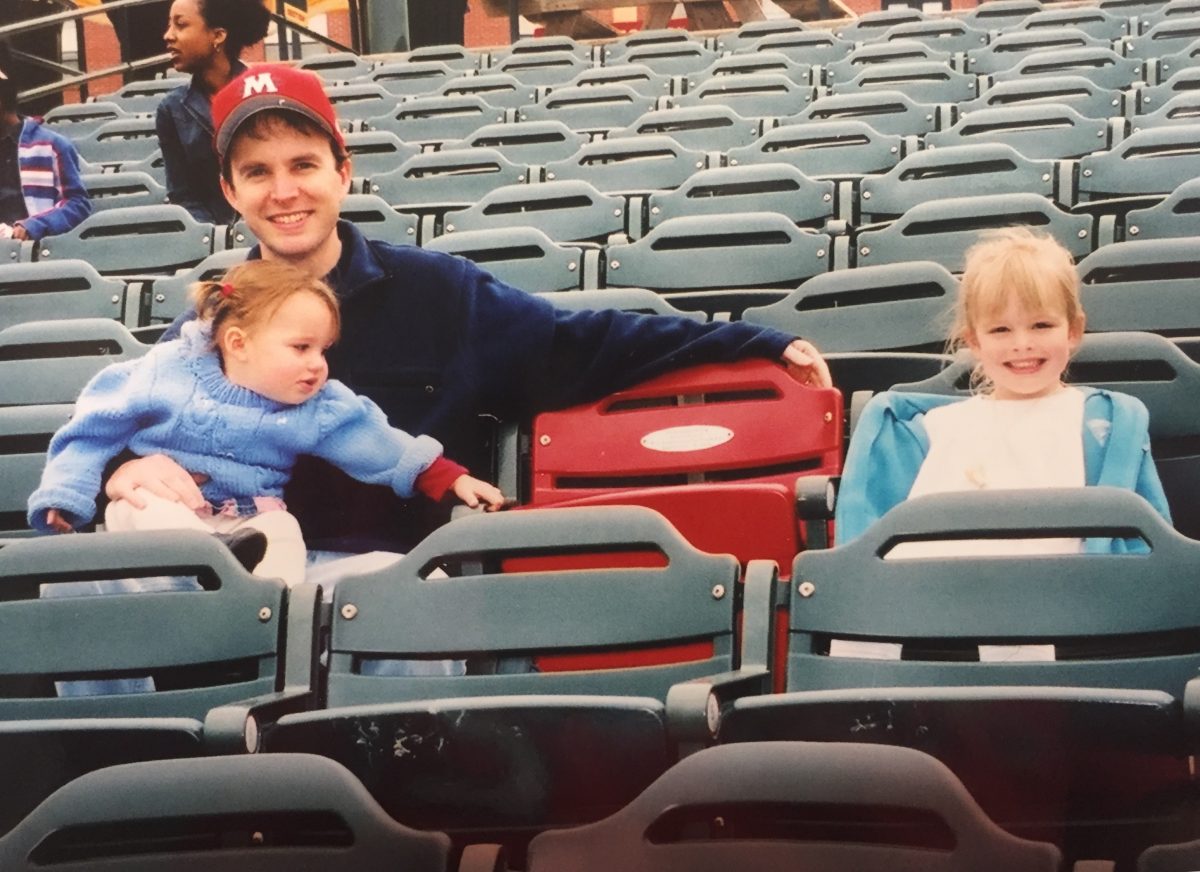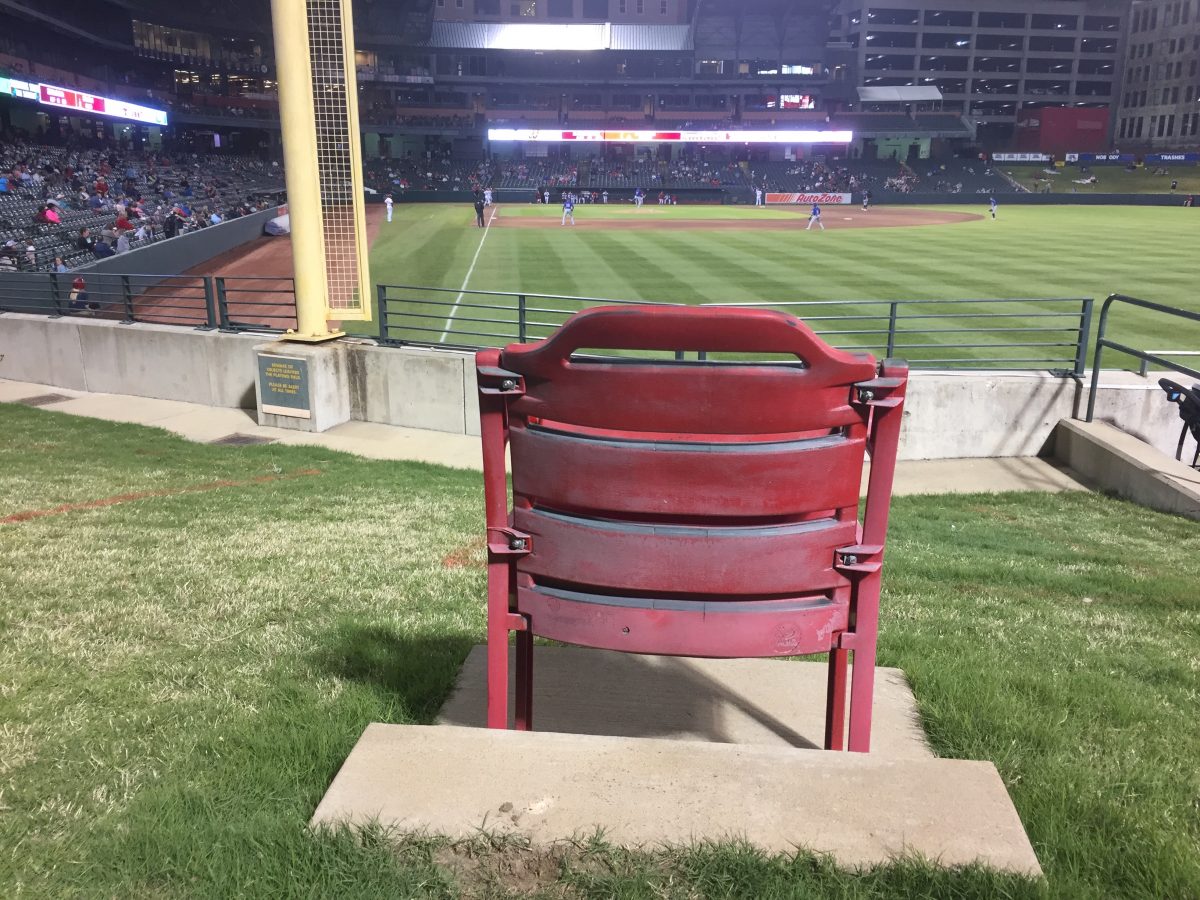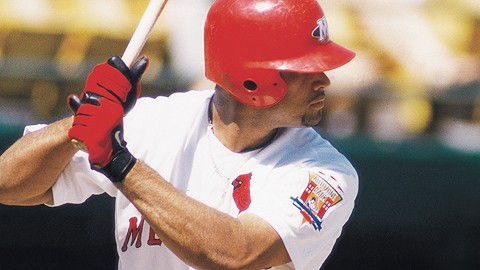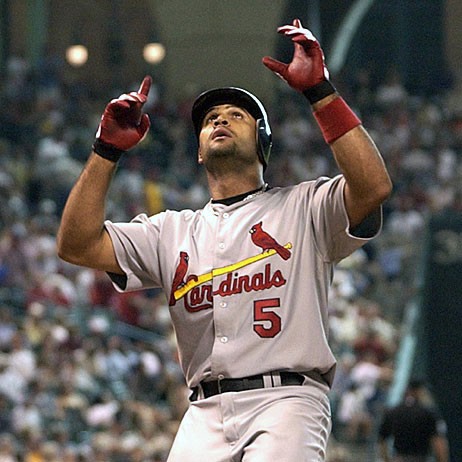Paint the seat red. Or white. It doesn’t matter. Take a cue from the Pittsburgh Pirates, who painted the upper-deck seats in Three Rivers Stadium where Willie Stargell hit a few of his mammoth shots. If Larry Sutton had hit the 13th-inning home run that won the 2000 PCL championship and capped AutoZone Park’s inaugural season, it would be worth a footnote in the media guide. But the fact that this title-winning, minor-league Mazeroski was delivered by Albert Pujols — this generation’s Frank Robinson — demands acknowledgment.
I wrote those words in this space in May 2003, as a 23-year-old Albert Pujols was already rearranging record books for the St. Louis Cardinals. Whether or not the Memphis Redbirds brass read them, by the following April I was able to pose for a picture with my young daughters and what’s come to be known as “The Pujols Chair” at AutoZone Park. This Saturday, the Redbirds will be giving out miniatures of the chair to the first 1,500 fans through the gates. It’s a fitting, and quite distinctive tribute to the great Pujols as he winds down his gargantuan career in pursuit of — deep breath here — 700 career home runs.
The Albert Pujols Story will never be rewritten. Let’s start with the most significant number of his 22 major-league seasons: 6,164 (and counting). On August 20th, Pujols moved past the greatest Cardinal of them all, Stan “The Man” Musial, for second place in career total bases. It’s a more significant number than home runs, one that measures a hitter’s power, consistency, and durability. (A player gets four total bases for a home run, three for a triple, etc.) Pujols will retire looking up only at Hank Aaron on the total-bases chart. Consider, also, that there have been only four players to accumulate 6,000 total bases: Pujols, Aaron, Musial, and Willie Mays. It’s quite a Rushmore.
The best part of the Albert Pujols Story here in 2022 is that he is helping his Cardinals toward a memorable season. The 42-year-old designated hitter (a position new to the National League this year), recently had a pair of two-homer games and delivered a pinch-hit grand slam against the Colorado Rockies on August 18th at Busch Stadium. He is making a farewell tour, of sorts, one with the club for whom he starred his first 11 seasons, but it’s a tour of impact, moments, and profound memories for baseball fans, many of them too young to remember his Rookie of the Year season (2001), to say nothing of a home run that won a minor-league franchise its first championship.
About that home run. I was sitting a few rows behind the Redbirds dugout on September 15, 2000, for Game 4 of the PCL championship series between Memphis and the Salt Lake Buzz. The Redbirds led the best-of-five series, 2-1, and were on the verge of securing the championship when they lost a lead late in the game, sending the contest to extra innings. In the bottom of the 13th, Pujols — wearing number 6, as Musial did with the Cardinals — slammed a line drive down the rightfield line, a ball that will always slice toward the foul pole off the bat of a righthanded hitter. When the baseball dropped into that lucky chair having flown just left of the pole, delirium ensued in the packed ballpark. To connect what we’ve seen from Pujols here, 22 years later, with that moment — across what amounts to a pair of baseball generations — is beyond a basis for comparison. It is the Albert Pujols Story, and it’s a thick volume.
My firstborn daughter is now a college graduate and lives in Honolulu. Her little sister is a junior at Saint Louis University. When we’re together and there’s a game in town — in Memphis or St. Louis — we go to the ballpark. (There are LOTS of red seats at Busch Stadium.) When we visit AutoZone Park these days, we tend to reflect, as families do while squeezing precious hours together. And the Pujols Chair is always there. I actually see it as smiling at us. So thank you, Albert Pujols, from the best seat in the house.



